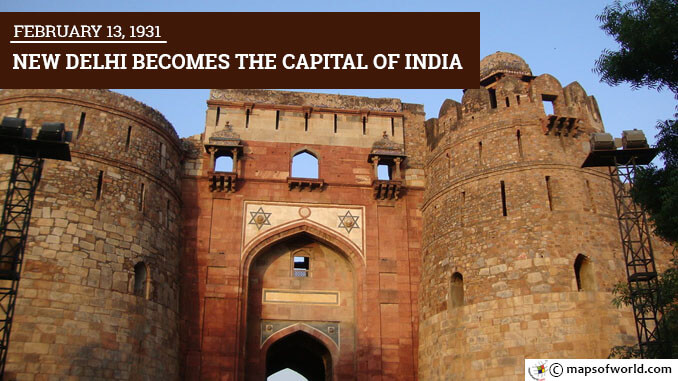On February 13, 1931, the British Viceroy of India formally inaugurated New Delhi as the capital of India. The city still retains its capital status and has become one of the most populous and prominent cities of the nations. The area that forms modern-day Delhi shows evidence of having been continually inhabited since 600 BC, although if Indian legends are to be believed, the Pandavas built the city Indraprastha here as far back as 2000 BC. Historians have found evidences of Mauryan civilization here, dating back to about 300 BC. Recorded history also provides us evidence of Delhi’s important position under kings through the first millennium starting from Emperor Ashoka (3rd century BC) to King Anga Pal (8th century AD). Anga Pal is believed to have established a beautiful city here called Lal Kot. Qutb-ud-din Aibak became the first Sultan of Delhi in 1206. He and Iltutmish built a powerful empire centered around the city. The Sultans who followed extended the territories of the Delhi Sultanate right up to the Deccan in the south but the expanse soon became difficult to manage. By the time Timur appeared in 1398, Delhi had become the key target of invaders. Babur, a descendant of Genghis Khan and Timur, invaded northern India in 1526, establishing the mighty Mughal Empire – one that would influence almost all of India and consolidate Delhi’s position as the capital. The Mughal kings ruled Delhi for more than three hundred years – broken by the short-lived reigns of Sher Shah Suri and King Hemu Vikramaditya. In the Battle of Panipat, Akbar – the greatest among the Mughal rulers – retook Delhi and the empire. Shah Jahan built a new city in Delhi naming it Shahjahanabad in 1638. Delhi’s decline commenced with the weakening of the Mughal Empire giving way to the ascendency of the Marathas at first and then the invasion by Turkish and Afghan rulers who looted the city, emptying it of many precious treasures including the famous peacock throne. With the arrival of the British in the 1600s, Kolkata (then called Calcutta) rose in prominence as the capital of India. Calcutta, however, suffered a number of drawbacks. Its location made it unsuitable as the seat of central administration and the regional nature of the city soon made it difficult to control the far out regions of the west. Calcutta remained India’s capital between 1858 and 1911. On December 12, 1911, King George V announced at a Durbar held in Delhi that India would have a new administrative capital; Delhi was chosen as the city that would replace Kolkata. British architects Edwin Lutyens and Herbert Baker were selected as the key designers for this new capital city that was to be called New Delhi. The architects agreed that “best of Indian styles should be the basis of the design for the new city.” The Times of London, in its story about the news reported – “What Akbar sought as an individual, we have sought as a race – the union of new principles with what is best in the old. Let us leave, like him, an architecture that truly embodies that ideal.” The construction of “New Delhi’ took about two decades. New Delhi was officially established as the capital of India on February 13, 1931 in the presence of the Viceroy of India, Lord Irwin. A grand parade marked the occasion and the heads of many countries sent him congratulatory messages. The Indian masses and their British overlords celebrated alike. The India Gate, a massive arch, broad central roads, the massive Government House (now Rashtrapati Bhavan), Willingdon Crescent, Lodhi Gardens, Connaught Place, boulevards and parks make it a stately capital befitting a great and ancient nation. New Delhi grew in might and stature through the British era and when India gained independence in 1947, it became the hub of administration, legislature, judiciary, and executive of the nation. Currently, the National Capital Territory of India is home to a population of 22,000,000 and is an ever-burgeoning city as more immigrants from other parts of the country and from other countries land here. The second capital of the world in terms of its avian population, New Delhi is also one of the most beautiful Asian capitals and has hosted the Commonwealth Games in 2010. You may also like : February 13 1945 – Royal Air Force Bombers Take Off for the First Raids in the Fire-Bombing of Dresden February 13 1960 – France conducted its first Nuclear Test
February 13 1931 – New Delhi becomes the capital of India
On February 13, 1931, the British Viceroy of India formally inaugurated New Delhi as the capital of India. The city still retains its capital status and has become one of…
455
